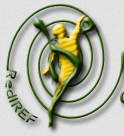Gender Equity in Community Physical Activity: Challenges, Barriers and Strategies for Inclusion. (Original)
Palabras clave:
Equidad de género, Actividad física comunitaria,Resumen
Gender equity is a fundamental principle for social justice, which seeks to ensure equal access to resources and opportunities, recognizing and addressing the historical and structural inequalities faced by women and other marginalized groups. In the field of physical activity (PA), gender plays a determining role, since social expectations and roles influence the participation and appreciation of these practices. Despite recent advances, barriers that limit female participation persist, such as gender stereotypes, the burden of domestic responsibilities, and socioeconomic inequalities. Community physical activity (CPA) has been proposed as a means to promote health and well-being, as well as strengthen social capital. However, women face various limitations in accessing PA programs, especially those in low-resource contexts or with family responsibilities. Non-binary people also face exclusion in binary sporting spaces, reinforcing the need to transform sporting structures and create inclusive and accessible environments for all. This article examines the barriers and inequalities that affect participation in PA from a gender perspective, and proposes strategies to promote inclusion and equity. Through public policies, specific programs and the active participation of women and non-binary people in the design of activities, we seek to move towards a fairer and more inclusive sports model, which considers the needs and capabilities of all groups, without distinction of gender.
Descargas
Referencias
Alemany, I., & Aguilar, N. (2019). Gender stereotypes and physical activity practice. Motion, 25, 1-16. doi:https://doi.org/10.22456/1982-8918.93460
Balboa , M. (2021). Commercialization and gender in sport. EmásF: digital magazine of physical education, 70, 8-14. http://emasf.webcindario.com/
Ballesteros, S., & Freidin, B. (2020). Intersectionality in social inequalities for carrying out physical activity in Argentina. Health Sciences Magazine, 18(1), 134-151. doi:https://doi.org/10.12804/revistas.urosario.edu.co/revsalud7a.8777
Bestard, A. (October 11, 2021). Gender equity in sexual orientation in Educational Sports institutions. REPXOS: https://repositorio.uci.cu/jspui/handle/123456789/9769
Cristiá, L., & Vázquez, V. (2024). Patterns of physical and sedentary activity in farmers from the rural community of La Picadora, Cuba. Ibero-American Journal of Physical Activity and Sports Sciences, 13(2), 71-90. doi:DOI:10.24310/riccafd.13.2.2024.19475
González, N., & Rivas, A. (2018). Physical activity and exercise in women. Colombian Journal of Cardiology, 25(1), 125-131. doi:https://doi.org/10.1016/j.rccar.2017.12.008
Izquierdo, L. (2019). Level of physical activity of the Cuban population: a systematic review. Panorama. Cuba and Health, 14(1), 70-73. http://www.icle/view/
Jarrín, F. (2024). Equity and Development. Castilla y León, Spain: University of Valladolid. https://uvadoc.uva.es/bitstream/handle/10324/9044/TFG-E-24.pdf
Lindstrom, M., & Rosvall, M. (2020). Sexual identity and low physical activity in free time: a population-based study. Public Health, 182, 77-79. doi:https://doi.org/10.1016/j.puhe.2020.02.003
Lleixà, T., & Soler, S. (2020). Gender perspective in the training of Physical Education teachers. Challenges. New trends in Physical Education, Sports and Recreation (37), 634-642. https://hdl.handle.net/2445/161627
Nsekera, L. (2021). Informe sobre igualdad de género e inclusión. Lausana, Suiza.: Comité Olímpico Internacional.
Ochoa, A., & Rodríguez, M. (2018). Perceived barriers and physical activity in the population of an office at the “José Trujillo” Teaching Polyclinic. Panorama Cuba and Health, 13, 150-155. https://www.medigraphic.com/cgi-bin/new/resumen.cg
Palacio, D., & O´Reilly, A. (2023). La inclusión social desde la práctica de la actividad físico-deportiva-recreativa. GADE, 3(5), 222-233. https://dialnet.unirioja.es/descarga/articulo/9769483.pdf
Reyes, T., & Moya, Y. (2022). Study Manual: Community Physical Activity. Valparaiso. Chile: University of Playa Ancha.
Rodríguez, A., & Sabando, Y. (2022). Gender inequality in physical activity and sport: Systematic review. MENTOR , 1(3), 346–369. doi:https://doi.org/10.56200/mried.v1i3.4762
UNESCO. (2024). Fit for Life. UNESCO.
Valladares, F. (2021). Cuban women in sports. PODIUM, 16(3), 681-684. https://podium.upr.edu.cu/index.php/podium/article/view/1161/html
Descargas
Publicado
Número
Sección
Licencia
Derechos de autor 2025 Revista científica Olimpia

Esta obra está bajo una licencia internacional Creative Commons Atribución-NoComercial-CompartirIgual 4.0.

































